Essential Reference Bundle (38 vols.)
Digital Logos Edition
Overview
The Essential Reference Bundle is a massive collection of some of our top dictionaries, encyclopedias, and other Bible reference sets.
With this collection, you’ll get important sets like the 4-volume International Standard Bible Encyclopedia (ISBE), the 5-volume Encyclopedia of Christianity, and the Dictionary of Christianity in America. You’ll also get important collections like the 16-volume Theology and Doctrine Collection, the 7-volume Early Church History Collection, and the 5-volume Eerdmans Bible Reference Collection.

- Title: Essential Reference Bundle
- Volumes: 38
- Pages: 18,000+
- Ancient Near Eastern Texts
- Dictionary of Christianity in America
- A New Eusebius: Documents Illustrating the History of the Church to AD 337, 2nd ed.
- Creeds, Councils and Controversies: Documents Illustrating the History of the Church, AD 337–461, New Edition
- Worship in the Early Church
- A Short History of the Early Church
- The Religious Context of Early Christianity: A Guide to Graeco-Roman Religions
- New Testament Times
- Meet Paul: An Encounter with the Apostle
- Old Testament Survey: The Message, Form, and Background of the Old Testament
- A Basic Bibliographic Guide for New Testament Exegesis, 2nd ed.
- God’s Plan of the Ages: A Comprehensive View of God’s Great Plan from Eternity to Eternity, 3rd ed.
- The Last Things: An Eschatology for Laymen
- The Making of the New Revised Standard Version of the Bible
- Historic Creeds and Confessions
- International Standard Bible Encyclopedia
- A Student’s Guide to Textual Criticism of the Bible: Its History, Methods and Results
- The Encyclopedia of Christianity, vols. 1–5
- God and the Future: Wolfhart Pannenberg’s Eschatological Doctrine of God
- Aquinas on Doctrine: A Critical Introduction
- Faith in the Millennium
- Forgiveness in Context: Theology and Psychology in Creative Dialogue
- Captured by the Crucified: The Practical Theology of Austin Farrer
- Ascension and Ecclesia
- The Gift of the World: An Introduction to the Theology of Dumitru Staniloae
- Justification: The Heart of the Christian Faith
- Barth’s Moral Theology: Human Action in Barth’s Thought
- The Shape of Pneumatology: Studies in the Doctrine of the Holy Spirit
- Naming the Silences: God, Medicine, and the Problem of Suffering
- Creatio Ex Nihilo: The Doctrine of ‘Creation out of Nothing’ in Early Christian Thought
- Resurrection
- Studies in Early Christology
- The Future as God’s Gift: Explorations in Christian Eschatology
- The Doctrine of Creation: Essays in Dogmatics, History and Philosophy
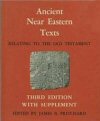
The Ancient Near Eastern Texts brings together the most important historical, legal, mythological, liturgical, and secular texts of the ancient Near East, with the purpose of providing a rich contextual base for understanding the people, cultures, and literature of the Old Testament. A scholar of religious thought and biblical archaeology, James Pritchard recruited the foremost linguists, historians, and archaeologists to select and translate the texts. The goal, in his words, was "a better understanding of the likenesses and differences which existed between Israel and the surrounding cultures."
Before the ANET—as it is fondly referred to—students of the Old Testament were disposed to search out scattered books and journals in various languages to find what this essential resource offers: invaluable documents, in one place and in one language. As one reviewer put it, "This great volume is one of the most notable to have appeared in the field of Old Testament scholarship this century."
Pritchard’s ANET, a standard reference for those examining the cultural setting of the Bible, contains translations of many important inscriptions which shed light on otherwise mysterious Bible customs. Included are such things as the Epic of Gilgamesh (containing our oldest Flood parallels), the Nuzi Texts (which, among others, help us understand the life of Jacob), various ancient law codes which have parallels to the biblical code, an early Palestinian ostraka, a wide selection of Egyptian and Akkadian oracles and prophecies, and even a Sumerian lullaby.
[A] very useful book, soundly conceived, competently edited, and beautifully printed. It offers in translation texts of the most important documents which throw light on the Near East background of the Old Testament. As a source book it will be welcomed not merely by Biblical students, but by all ancient historians who concern themselves with the cultures anterior to those of Greece and Rome.
—Archaeology
James Bennett Pritchard (1909–1997) was an American archaeologist who excavated in Israel, Canaan, Egypt, Assyria, and Babylon. He received his PhD and taught Religious Thought at the University of Pennsylvania, and was the first curator of Biblical Archaeology at the university’s museum. His last major excavation was at Sarafand, Lebanon (1969–1974), which revealed the ancient Phoenician city of Sarepta. It was the first time a major Phoenician city situated in the Phoenician heartland had been fully excavated. He was President of the Archaeological Institute of America in 1972–1973, and the recipient in December 1983 of the institute’s prestigious Gold Medal for Distinguished Archaeological Achievement. His major focus throughout his career concerned the relation between material remains and written texts within the context of biblical studies. Pritchard served as editor and consultant to the American Philosophical Society, the American Oriental Society, the National Geographic Society, and the Archaeological Institute of America.
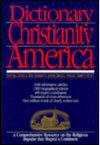
Dictionary of Christianity in America
- Editor: Daniel G. Reid
- Publisher: InterVarsity Press
- Publication Date: 1990
There is nothing like the Dictionary of Christianity in America. Even most libraries can’t offer you all the facts, perspectives and information you’ll find in this single volume. The work of over 400 scholars and experts in American religion, the Dictionary of Christianity in America offers 2,400 authoritative articles on nearly every aspect of this fascinating epoch in modern Christian history. The riches of North America’s religious heritage are great. This book takes the wraps off the significant role Christianity has played in our history, our culture and our life today. Readers can also examine their own religious roots, discovering the saints and the sinners, the thinkers and the shapers who helped mold a continent. Written with a broad readership in mind, the Dictionary of Christianity in America attempts to convey in an objective manner the history, beliefs and practices of the major—as well as the minor—Christian traditions in North America.
Daniel G. Reid (PhD, Fuller Theological Seminary) is Senior Editor for reference and academic books at InterVarsity Press, where he has worked since 1986.
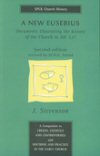
A New Eusebius: Documents Illustrating the History of the Church to AD 337, 2nd ed.
- Editors: J. Stevenson, revised by W. H. C. Frend
- Publisher: SPCK
- Publication Date: 1987
- Pages: 430
A New Eusebius has held an unrivaled position as the standard source book for students of the early patristic period. Stevenson has gathered an impressive compilation of documents, including the Martyrdom of James, the Flight of the Christians from Jerusalem, and Persecution by Domitian, from such writers as Eusebius, Clement of Rome, Ignatius, Polycarp, Justin, and Irenaeus. These primary sources, covering church history up to AD 337, are invaluable for those who desire to understand early church history. In this new edition, Professor W. H. C. Frend has incorporated vital documents that were not available when the original collection was compiled. The notes and references have been amended and updated where necessary, and the entire book has been restructured with documents grouped under helpful subject headings which follow a broadly chronological sequence.
Here is a first-rate introduction to the history and doctrine of the early Church, a work of scholarship which will serve theologians and historians alike for a long time to come.
—Church of England Newspaper
J. Stevenson (d.1983) was Fellow of Downing College, Cambridge.
W. H. C. Frend (1916–2005) was Chair of Ecclesiastical History of Glasgow University, Fellow of the British Academy, and Fellow of the Society of Antiquaries of London. He was the author of Martyrdom and Persecution in the Early Church and The Rise of Christianity.
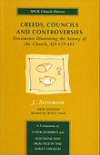
Creeds, Councils and Controversies: Documents Illustrating the History of the Church, AD 337–461, New Edition
- Editors: J. Stevenson, revised by W. H. C. Frend
- Publisher: SPCK
- Publication Date: 1989
- Pages: 431
For over forty years, Creeds, Councils and Controversies has been an essential primary source book for students of the later patristic period. Like its predecessor, A New Eusebius it documents the history of the early Church, covering AD 377 to 461. Stevenson offers Persecution in Persia, The Council of Antioch, The Creed of Jerusalem and The Synod of Ashtishat. Authors of these documents include Athanasius, Cyril of Jerusalem, Marcellinus, Theodoret, Gregory of Nazianzus, Jerome, Augustine, and Bede. Professor Frend has regrouped the documents in their historic settings. For example, Jerome’s writings are placed together as are those writings that recount the controversies in which Augustine and Cyril of Alexandria were involved. Nearly forty documents have been added to this new edition and the notes and bibliography have been updated.
Anyone interested in the early days of Christianity or in the later Roman Empire will find this book attractive to browse in. Every lecturer on the period will be grateful for the opportunity to refer his hearers to this admirable collection.
—Times Literary Supplement
J. Stevenson (d.1983) was Fellow of Downing College, Cambridge.
W. H. C. Frend (1916–2005) was Chair of Ecclesiastical History of Glasgow University, Fellow of the British Academy, and Fellow of the Society of Antiquaries of London. He was the author of Martyrdom and Persecution in the Early Church and The Rise of Christianity.

Worship in the Early Church
- Author: Ralph P. Martin
- Publisher: Eerdmans
- Publication Date: 1974
- Pages: 144
Worship in the Early Church sheds light on how the earliest Christians worshiped God, including several elements into their worship that reflected their Jewish heritage. Prayers and praises, singing, creeds and confessions, preaching, offerings, and sacrament—these are the chief features of early Christian worship examined by Professor Martin. Pastors, ministers, Sunday school teachers and laypersons will benefit from this lucid account of why believers do what they do when they gather together to worship.
Ralph Martin was Professor of New Testament at Fuller Theological Seminary and is now Distinguished Scholar in Residence. He holds a PhD from the University of London and is the author of numerous books and articles about the New Testament, including The Worship of God and Reconciliation: A Study of Paul’s Theology. He has served as New Testament Editor for the Word Biblical Commentary Series and has edited the Dictionary of Paul and His Letters.
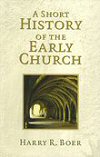
A Short History of the Early Church
- Author: Harry R. Boer
- Publisher: Eerdmans
- Publication Date: 1976
- Pages: 198
Boer offers a reliable introduction to the history of the early church, providing background on the world into which the church was born, as he surveys the life of the church from the ministry of Jesus to AD 600. He examines the effects of persecution and heresy on the church and explains the role of several key church leaders. The author elucidates the church’s ongoing struggle to formulate proper doctrines of the Trinity and of Christ. Each chapter is clearly outlined and concludes with several discussion questions, making it an excellent study guide for church groups.
Offers the layman an excellent overview of the course of Christianity in the first few centuries of our era.
—Christianity Today
Harry Boer (1913–1999) worked as a missionary in Nigeria for the Christian Reformed Church. He was an editor and founder of the Reformed Journal, and served as Principal of The Theological College of Northern Nigeria at Bukuru from 1957 to 1971. He is the author of The Four Gospels and Acts and An Ember Still Glowing.
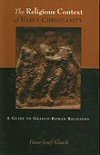
The Religious Context of Early Christianity: A Guide to Graeco-Roman Religions
- Author: Hans-Josef Klauck
- Publisher: Fortress Press
- Publication Date: 2003
- Pages: 540
Klauck has written a college-level reference to the religious practices that were common and widespread at the inception of Christianity. He examines antiquarian sacrificial cults; popular belief systems of the day—astrology, magic and soothsaying; the imperial cult worship of rulers and emperors; and Gnostic transformation. The Religious Context of Early Christianity is a scholarly researched and meticulously presented reference work, which is a welcome addition to Christian studies in that it provides contextual information regarding Christianity’s place in the Graeco-Roman empire.
Klauck’s approach is to select the material most important for the students of early Christianity. . . . One can say without hesitation that the author has succeeded admirably in his attempt at compressing vast fields of complicated materials into a survey that is both manageable and informative. His key to success was concentration on matters of fundamental importance and prudent selection of primary texts, coupled with interpretation and bibliographies reflecting the current state of research. . . . Klauck’s work represents a major achievement.
—Hans Dieter Betz, Journal of Biblical Literature
Hans-Josef Klauck is Professor of New Testament and Early Christian Literature at the Divinity School of the University of Chicago. He has worked extensively on New Testament topics, such as the parables of Jesus, Paul’s Corinthian correspondence, and the Johannine letters, specializing in the religious and social history of the Greaco-Roman world as a necessary background to New Testament studies. He is the author of Ancient Letters and the New Testament.
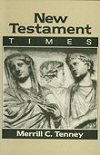
New Testament Times
- Author: Merrill C. Tenney
- Publisher: Eerdmans
- Publication Date: 1965
- Pages: 408
Tenney provides a concise reconstruction of the cultural milieu in which Christianity arose and developed from the time of the Maccabean Revolt to AD 138. He begins with an explanation of the relevance of the historical, political, social, and economic background of the first century which helps furnish a proper understanding of the New Testament. Recognizing the embryonic church rose out of three cultural tensions—Judaism, Roman imperialism, and Hellenism—Tenney traces its development under several Roman emperors: Christ’s birth under the age of Augustus, Christ’s ministry under the reign of Tiberius, church persecution under Nero and Domitian, and the new era of Christianity under Trajan and Hadrian. New Testament Times demonstrates how the biblical message was able to speak clearly and meaningfully within the historical framework in which it was set.
Based on wide research and careful critical judgment, this may well be Dr. Tenney’s best book. It puts the student in possession of an immense amount of historical material relevant to the understanding of the New Testament.
—Everett F. Harrison
Merrill Tenney (1904–1985) was for many years Dean of the Graduate School and Professor of Bible and Theology at Wheaton College. Among his many books are Galatians: The Charter of Christian Liberty and Interpreting Revelation.
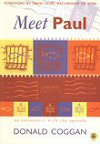
Meet Paul: An Encounter with the Apostle
- Author: Donald Coggan
- Publisher: SPCK
- Publication Date: 1998
- Pages: 124
Coggan invites us to meet the man who has significantly influenced the development of Christianity over the last two millennia. This introduction, however, is not to the grim and pedantic figure of popular stereotype, but to a complex person, passionate, affectionate, and very human. The author reveals the crucial significance of the apostle’s favorite phrase, “in Christ,” and illuminates the many facets of his personality and teaching.
This work makes Paul alive, in Christ, and supremely relevant for both the world and the Church of today.
—David Hope, from the Foreword
Donald Coggan (1909–2000) was Archbishop of York from 1961 to 1974 and of Canterbury from 1974 to 1980. He was educated at Merchant Taylor’s School and St. John’s College. He lectured in Semitic languages at the University of Manchester; was Professor of New Testament at Wycliffe College in Toronto; and Principal of London College of Divinity. He founded the Lord Coggan Memorial Fund which helped to supply Russian children with copies of the Bible. He is the author of The Voice from the Cross and The Servant-Son: Jesus Then and Now.
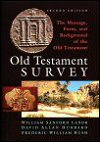
Since its initial publication in 1982, Old Testament Survey has served as the standard textbook on the background, content, literary quality, and message of the Old Testament. The second edition of this excellent work has been thoroughly revised and updated to take into account new research in the field of Old Testament studies. The book now also includes important new contributions from six leading biblical studies scholars: Leslie C. Allen, James R. Battenfield, John E. Hartley, Robert L. Hubbard, Jr., John E. McKenna, and William B. Nelson, Jr.
Reflecting the best of evangelical scholarship, Old Testament Survey provides a comprehensive study of the nature and contents of each of the thirty-nine books of the Old Testament and also considers the historical data and theological themes relevant to the Hebrew Scriptures. Part 1 covers the five books of the Pentateuch. Part 2 studies the books of the Prophets, with special consideration given to the birth and history of Israel’s monarchy, the role of prophets and prophecy, and the nature of Hebrew poetry. Part 3 examines the Writings, including a special study of wisdom literature in general.
Part 4, which has been relocated from the front of the book to the back, contains studies of various background themes necessary for understanding the Old Testament:
- The Authority of the Old Testament for Christians
- Revelation and Inspiration
- The Concept of Canon
- Formation of the Old Testament
- Geography
- The Chronological Puzzle
- Archaeology
- Messianic Prophecy
Other significant features of this edition include the incorporation throughout of data from recent archaeological research and the use of additional charts, illustrations, and maps. The authors have also included—in the text and in the endnotes and bibliographies—material as current as possible, especially in those instances where new interpretive options have arisen or where the scholarly consensus has changed. All of the revisions and enhancements undertaken in this volume will make Old Testament Survey even more serviceable for college and seminary use as well as for study by scholars, pastors, and interested lay readers.
An effective presentation of Old Testament information for beginning students of the Bible.
—Religious Studies Review
William Sanford LaSor (1911–1991) was Professor Emeritus of Old Testament at Fuller Theological Seminary in Pasadena, California.
David Allan Hubbard (1928–1996) was President Emeritus and Professor Emeritus of Old Testament at Fuller Theological Seminary.
Frederic William Bush is D. Wilson Moore Professor Emeritus of Ancient Near Eastern Studies at Fuller Theological Seminary.
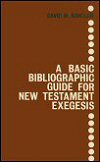
This classified listing of more than 425 basic reference tools for adequate and responsible interpretation of the New Testament is designed primarily for the theological student beginning New Testament Greek exegesis. Limited to works in English (although many of the books listed do assume a basic knowledge of Greek and Hebrew)), A Basic Bibliographic Guide for New Testament Exegesis provides publication data and a brief annotation for each title. In addition to seminary New Testament classes, it will be useful for pastors and teachers in the church and for students in New Testament studies at the college and university level.
This work should be in the hands of every teacher of biblical studies…and seminary or Bible College librarian, as well as on the desk of seminarians for whom it is intended. Rightly used, it will save even more advanced scholars hours of wasted time and energy . . . It is the sort of handbook which has been needed for a long time.
—W. Ward Gasque, Journal of the Evangelical Theological Society
David M. Scholer was Professor in the New Testament Department at Gordon-Conwell Theological Seminary. He has published Nag Hammadi Bibliography, as well as articles and book reviews in various periodicals.
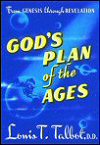
God’s Plan of the Ages is a classic statement of the dispensational understanding of God’s design for human history. Louis T. Talbot clearly and reliably outlines a comprehensive view of the plan of God from the beginning of Genesis to the close of Revelation.
The definite purpose of God for each age is made apparent through a detailed study of Scripture as the plan is unfolded: the creation of humankind and the age of innocence, the fall and the age of conscience, the age of human government, the age of law, the church age, the return of Christ and his thousand-year reign, and the new heavens and new earth.
Talbot also answers many troublesome questions concerning the end-times prophecies of Daniel and of Revelation. He makes clear, for example, the difference between the “judgment seat of Christ” and “the great white throne.” He also demonstrates why the premillenial concept is the correct one, and shows from Scripture that the church will be translated at the beginning of “the great tribulation” in order to spare it from the purifying judgments to follow.
God’s Plan of the Ages is a Christian classic that has value not only to students of prophecy but to all Christians who desire a comprehensive view of God’s grand design for eternity.
Louis T. Talbot was Chancellor of Biola College and Talbot Theological Seminary. He is the author of Bible Questions Explained and An Exposition of the Book of Revelation.
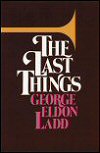
In recent years scriptural prophecies about the end times have become the subject of an increasing number of books. Many of these, however, are popularized accounts containing little thoughtful biblical scholarship. Yet the series studies available are often too difficult for the average reader to understand. George Eldon Ladd has endeavored to rectify this situation with a serious discussion of eschatology written for the layperson.
Two radically different interpretations of the relationship between the prophecies of the Old and New Testaments have been offered. One view sees separate programs for Israel and the Christian church, while the other recognizes progressive revelation and a unity of the Testaments.
Professor Ladd holds the latter position, basing his doctrine of the last things on the conviction that “our final word . . . is to be found in New Testament reinterpretation of Old Testament prophecy.” Only as the prophecies are seen in the light of God’s revelation through Christ can we clearly comprehend what they mean in relation to the end times.
George Eldon Ladd was Professor of New Testament Exegesis and Theology at Fuller Theological Seminary in Pasadena, California. Among his numerous books are The Presence of the Future, The Blessed Hope, A Commentary on the Book of Revelation, and A Theology of the New Testament.
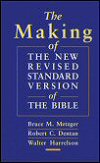
The publication of the New Revised Standard Version (NRSV) in September 1990 marked yet another milestone in the history of Bible translation. How the NRSV—a new synthesis of scholarly accuracy and expressive power—came to be is the subject of this book.
Written by three members of the translation committee responsible for producing the New Revised Standard Version, this book is addressed to the general public “with the aim of helping the reader of the Bible to understand the main principles that guided the work of the Standard Bible Committee.”
Robert Dentan begins by recounting both the historical background and the actual production of the NRSV. Walter Harrelson then discusses how the discoveries of the Dead Sea Scrolls and other manuscript finds have affected Bible translation. Bruce Metzger proceeds to write about some of the many problems facing Bible translators—and about how the NRSV Committee worked together for seventeen years to meet those challenges. Walter Harrelson concludes the book by discussing how masculine-biased language in English distorts the message of the biblical writers, and he details the evolution of the Committee’s inclusive-language policy. Throughout the book the three authors describe the NRSV Committee in its work as seeking to be “as literal as possible, as free as necessary.”
An inside account of how one of the premier Bible translations of our time was produced, The Making of the New Revised Standard Version will interest a wide variety of ministers, scholars, and church members—indeed, all those who are serious students of the Bible.
Bruce M. Metzger (1914–2007) was George L. Collord Professor of New Testament Language and Literature Emeritus at Princeton Theological Seminary. An expert in ancient biblical manuscripts, he participated in three major Bible translation projects and was chairman of the NRSV translation committee. His many books include A Textual Commentary on the Greek New Testament and The Bible in Translation: Ancient and English Versions.
Robert C. Dentan is Professor Emeritus of Old Testament at General Theological Seminary, New York City.
Walter Harrelson is Professor Emeritus of Hebrew Bible at the Divinity School of Vanderbilt University, Nashville, Tennessee.
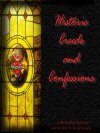
Historic Creeds and Confessions
- Author: Rick Brannan
- Publisher: Logos Bible Software
- Publication Date: 1997
A compilation of historic creeds of the faith, including: The Apostles’ Creed, The Nicene Creed, The Symbol of Chalcedon and The Athanasian Creed, and the following Historic Confessions and Statements of Faith: The Belgic Confession, The Heidelberg Catechism, and The Canons of Dordt.

The International Standard Bible Encyclopedia is the most up-to-date multivolume Bible encyclopedia written by conservative scholars. It’s characterized by careful and contemporary scholarship and a wealth of illustrations—nearly 1,500 photos (many in color), plus 342 maps.
A must-have for any biblical scholar, this resource contains over 9,000 topics and 3,500 cross-references, including: an article on every name of a person or place mentioned in the Bible and all the terms in the Bible that have theological or ethical meaning. ISBE is also an exegetical tool as it provides brief discussions of problem texts under the English keywords and guides the exegete to more information that can found in other scholarly resources. Each entry provides a maximum amount of information in compact form, including pronunciation, etymology, and variant renderings. The original Hebrew, Aramaic, or Greek words are transliterated aiding those with limited or no knowledge of the original languages of the Bible. Major articles are subdivided, with a helpful outline provided at the beginning of the entry. Major Bible doctrines are also examined and given opposing articles on controversial topics to ensure a rounded explanation and description. Hundreds of evangelical contributors from many fields of biblical research make this encyclopedia a well-rounded resource.
Winner of the Evangelical Christian Publishers Association’s Gold Medallion Award for Bible Study/Theology (1980) and the Gold Medallion Award for a Reference Work (1983, 1987). Volumes included in this collection are:
- International Standard Bible Encyclopedia, Volume I: A–D
- International Standard Bible Encyclopedia, Volume II: E–J
- International Standard Bible Encyclopedia, Volume III: K–P
- International Standard Bible Encyclopedia, Volume IV: Q–Z
I use this set more than any other reference work I own. Great articles on every major doctrine, person, place, and event in the Bible. This one . . . is indispensable!
—Dr. Kim Riddlebarger
Geoffrey W. Bromiley (1915–2009) was Professor Emeritus of Church History and Historical Theology at Fuller Theological Seminary in Pasadena, California. He was best known as the translator of numerous theological books, including Theological Dictionary of the New Testament.
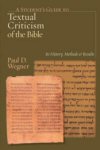
A Student’s Guide to Textual Criticism of the Bible
- Author: Paul D. Wegner
- Publisher: IVP
- Publication Date: 2006
- Pages: 334
A Student’s Guide to Textual Criticism of the Bible presents, in plain language and with ample illustration, an overview of the history and methods, aims and results of textual criticism. In the process, the readers gain an appreciation for the vast work that has been accomplished in preserving the text of Scripture and find a renewed confidence in its reliability.
The Bible has been on a long historical journey since its original composition. Its texts have been copied and recopied. And despite the most careful and painstaking efforts of scribes and publishers down through the centuries, errors of one sort or another have crept in and have been reproduced. Sorting out the errors and determining the original wording is the task of textual criticism.
In fact, the task of textual criticism is so daunting and detailed that it is divided between Old Testament textual critics and New Testament textual critics. That is why nearly every book on the subject focuses on the textual criticism of either the Old or New Testament. But if you are one of those interested in a general understanding of textual criticism, A Student’s Guide to Textual Criticism of the Bible introduces you to textual criticism of the whole Bible—the Hebrew Old Testament and the Greek New Testament.
Here, at last, is a well-written, succinctly stated, wisely selected history and wonderfully illustrated textual criticism guide that covers both testaments in one volume. Where others have often made this science sound arcane and obtuse, Paul Wegner has skillfully described textual criticism in plain but ample and interesting ways. I highly recommend it to all serious Bible students, but especially to seminary faculty who must juggle book budgets and who up to now have had to order a separate text in this area for each testament.
—Walter C. Kaiser Jr., President and Colman M. Mockler Distinguished Professor of Old Testament, Gordon-Conwell Theological Seminary
No introductory textbook to textual criticism of the Bible measures up to A Student’s Guide to Textual Criticism of the Bible. It uniquely combines Old Testament and New Testament textual criticism into one handy, delightfully illustrated volume. Paul Wegner writes for students, successfully guiding them through the text’s long and complex journey by his clear style, objectivity and arresting photographs. General readers of the Bible will appreciate this introduction to the textual notes in their Bibles.
—Bruce K. Waltke, Professor of Old Testament, Reformed Theological Seminary, and Emeritus Professor of Old Testament, Regent College
Paul D. Wegner is professor of Old Testament at Phoenix Seminary in Phoenix, Arizona. He is the author of The Journey from Texts to Translations: The Origin and Development of the Bible.

The Encyclopedia of Christianity is a monumental reference work that addresses the broad interest in Christianity and religion around the world today. Comprehensive, up to date, reflecting the highest standards in scholarship, yet intended for a wide range of readers, The Encyclopedia of Christianity describes the Christian faith and community in their myriad forms today and throughout the 2,000 years of Christian history. The Encyclopedia of Christianity also looks outward beyond Christianity, considering other world religions and philosophies as it paints the overall religious and sociocultural picture in which the Christian church now finds itself in the new millennium.
Written by leading scholars from many countries and cultural backgrounds, the more than 1,700 articles in the complete The Encyclopedia of Christianity depict Christianity in its global context. Separate articles for every continent and for over 170 countries examine both the history and the current situation of the Christian faith worldwide. The Encyclopedia of Christianity also portrays Christianity in its widest ecumenical context. Major articles detail Christianity’s rich spiritual and theological diversity in order to inform readers about religious traditions and perspectives beyond their own ecclesiastical frameworks.
In its portrayal of Christianity, The Encyclopedia of Christianity also takes into account the current sociocultural context, including other world religions, secular philosophies, cultural trends, and modern political and economic forces. Covering such current topics as abortion, atheism, Islam, modernity, and psychoanalysis, these articles describe the multifarious settings in which the Christian church today must maintain a credible witness to the ancient gospel. Finally, The Encyclopedia of Christianity presents Christianity in its rich historical context, starting with the biblical tradition and showing how the apostolic tradition developed and how the church has sought throughout history to keep faith with its traditions while engaging the world around it.
An outstanding international collegium of editors, consultants, and contributors has brought together a vast amount of information in an accessible, readable form in The Encyclopedia of Christianity.
—Thomas C. Oden
Erwin Fahlbusch was Honorary Professor in the Department of Systematic Theology the Faculty of Protestant Theology at the University of Frankfurt.
Jan Milic Lochman was an ordained minister in the Evangelical Church and he taught philosophy of religion and systematic theology at the Comenius Faculty of Protestant Theology in Prague.
John Mbiti is a Christian religious philosopher. He is an ordained Anglican priest and received his doctorate in 1963 at the University of Cambridge.
Jaroslav Pelikan was Sterling Professor of History Emeritus at Yale University. He is the author of more than thirty books, including Jesus Through the Centuries. He has received the Jefferson Award of the National Endowment for the Humanities, the highest honor conferred by the US government on a scholar of the humanities.
Lukas Vischer was Professor Emeritus of Ecumenical Theology at Evangelical Reformed Theological Faculty of Berne, Switzerland.

God and the Future: Wolfhart Pannenberg’s Eschatological Doctrine of God
- Authors: Christiaan Mostert
- Publisher: T&T Clark
- Publication Date: 2002
- Pages: 288
An introduction to the theology of Wolfhart Pannenberg. Pannenberg’s extensive works, especially his recently published Systematic Theology, are increasingly regarded as of major importance. Professor Mostert here provides not only a general introduction to Pannenberg’s theology, and many keys to enable the serious reader of theology to access Pannenberg’s individual works, but also sets Pannenberg’s complex thought in the broadest context of contemporary philosophical and theological thought.
Christiaan Mostert is Professor of Systematic Theology, Uniting Church Theological Hall, and Lecturer in Theology, United Faculty of Theology, Melbourne.
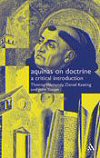
Aquinas on Doctrine: A Critical Introduction
- Editors: Thomas G. Weinandy, Daniel A. Keating, and John P. Yocum
- Publisher: T&T Clark
- Publication Date: 2004
- Pages: 296
This book provides a critical study of the main Christian doctrines as understood and explained by Thomas Aquinas. The whole Thomistic revival of the last century focused almost exclusively on Aquinas as the Christian philosopher. Thus books and articles developed his understanding of being, his epistemology, natural theology, etc. However little has been done, even to this day, by way of examining Aquinas’ teaching on the major Christian doctrines.
Thomas G. Weinandy is Executive Director of the Secretariat for Doctrine and Pastoral Practices of the United States Conference of Catholic Bishops.
Daniel A. Keating teaches at the Sacred Heart Seminary, Detroit.
John P. Yocum teaches at Greyfriars, Oxford.
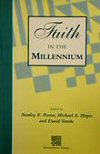
Faith in the Millennium
- Editors: Stanley E. Porter, Michael A. Hayes, and David Tombs
- Publisher: T&T Clark
- Publication Date: 2001
- Pages: 496
At the close of one millennium and the beginning of a new one, this conference volume reflects on the past and looks forward to a new era in terms of the development of faith. Although most of the papers in the volume address issues concerning Christian faith, the volume is not confined to such a perspective, since the concept of faith is treated here in an encompassing and broad manner. The historical perspective reaches back several millennia, addresses contemporary issues of economics and justice as they have a bearing on faith, and looks to the future as a new millennium presents its own problems and potential opportunities.
Stanley E. Porter is Principal, Dean and Professor of New Testament, McMaster Divinity College, Canada.
Michael A. Hayes is Head of the Department of Theology and Religious Studies at St Mary’s College, Strawberry Hill, Twickenham in the University of Surrey.
David Tombs is Senior Lecturer in Theology at the University of Surrey Roehampton, London.
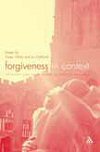
Forgiveness in Context: Theology and Psychology in Creative Dialogue
- Editors: Fraser Watts and Liz Gulliford
- Publisher: T&T Clark
- Publication Date: 2004
- Pages: 200
The last twenty years have seen the development of a growing body of psychological literature on the long-neglected subject of forgiveness. Forgiveness has been widely regarded as a purely religious construct. However, recently it has been advocated in many different secular contexts as offering an appropriate and healthy means of release. This volume continually engages the reader on both psychological and theological levels in a sustained dialogue that has not permeated any of the books already available on forgiveness.
Fraser Watts is Starbridge Lecturer in Theology and Natural Sciences, and Director of the Psychology and Religion Research Programme, University of Cambridge.
Liz Gulliford is Research Assistant, Psychology and Religion Research Programme, University of Cambridge.
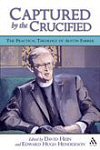
Captured by the Crucified: The Practical Theology of Austin Farrer
- Editors: Edward Hugh Henderson and David Hein
- Publisher: T&T Clark
- Publication Date: 2004
- Pages: 240
The British theologian and New Testament scholar Austin Farrer was a member of “the Oxford Christians,” conversing frequently with C. S. Lewis, J. R. R. Tolkien, Dorothy Sayers, and T. S. Eliot. A. N. Wilson has called Farrer “the one true genius of the Church of England in the twentieth century.” Farrer’s theory about the Synoptic Problem remains one of the most debated theories of Synoptic relationships in contemporary New Testament scholarship. The editors have put together a book that makes the practical, spiritual meaning of Farrer’s thought available to those who desire to integrate serious thinking with faithful life.
Contributors to the volume include Ann Loades (University of Durham), Diogenes Allen (Princeton Theological Seminary), Julian N. Hartt (University of Virginia), Charles Hefling (Boston College), and O. C. Edwards (Seabury-Western Theological Seminary).
This volume represents a considered and comprehensive review of Austin Farrer’s achievement as priest, biblical scholar, philosophical theologian, and spiritual guide. It bears impressive witness to the unified vision which inspired his life and work and explains how, although firmly rooted in his time and place, he remains significant today for all who seek to understand and practice the Christian Faith.
—Basil Mitchell, Emeritus Fellow, Oriel College, University of Oxford.
Edward Hugh Henderson is Professor of Philosophy at Louisiana State University and the co-editor with Brian Hebblethwaite of Divine Action: Studies Inspired by the Philosophical Theology of Austin Farrar.
David Hein is Professor and Chair of Religion and Philosophy at Hood College and is the author of Noble Powell and the Episcopal Establishment in the Twentieth Century.
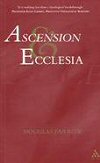
Ascension and Ecclesia
- Author: Douglas Farrow
- Publisher: T&T Clark
- Publication Date: 2002
- Pages: 340
Recent theology offers few attempts to come to grips with the meaning and implications of the ascension of Jesus. Professor Farrow begins with a discussion of the biblical treatment of the ascension and Eucharistic celebration, from which emerges the unique ecclesial worldview. There are chapters on the treatment of these ideas by Irenaeus, Origen and Augustine, and on developments up to the Reformation. He explores the link between ideas of the ascension, cosmology and ecclesiology. Farrow goes on to examine the difficulties faced by the doctrine of ascension in the modern scientific world. In a final chapter he calls for an ecclesiology, which does not marginalize the human Jesus.
It is nothing less than a theological breakthrough.
—Professor Ellen Charry, Princeton Theological Seminary
Douglas Farrow is Professor of Theology and the History of Christian Thought, McGill University, Montreal.
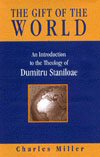
The Gift of the World: An Introduction to the Theology of Dumitru Staniloae
- Author: Charles Miller
- Publisher: T&T Clark
- Publication Date: 2001
- Pages: 144
Until recently (and partly because of the political circumstances of the Romanian church prior to 1989), English-speaking readers have had access to very little of Staniloae’s writing. But his great masterpiece, Orthodox Dogmatic Theology, is at last beginning to appear. Staniloae’s theological stature has been compared to Barth, Rahner and Schillebeeckx. In him we meet not only a contemporary master of Orthodox thought but a Christian thinker of ecumenical proportions—one who addresses the needs and aspirations of Christians living in a technological age, and who offers an important and timely contribution to “Green” theology.
The present volume is described by the author as a “prolegomenon” to the reading of Staniloae. It takes one vital theme from the centre of his dogmatic system - that of creation as the primordial gift of God—and shows how this applies both to sacramental theology and to ecclesiology. Containing a guide to the works of Staniloae, Charles Miller’s book will be of immense value to all those who are struggling to understand the meaning of the created order: Anglicans, Catholics and Orthodox alike.
Dumitru Staniloae was one of the outstanding Orthodox theologians of our century. In this book Charles Miller provides us with an admirable introduction to his work, short but substantial, lucid and well-balanced . . . this is a book which could transform our view of the potentials of theology to meet the challenge of the new millennium.
—Canon A. M. Allchin
Charles Miller is Associate Professor of Theology, Nashotah House Episcopal Seminary, Wisconsin.
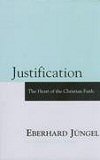
Justification: The Heart of the Christian Faith
- Author: Eberhard Jüngel
- Publisher: T&T Clark
- Publication Date: 2006
- Pages: 328
This significant work, precipitated by the Lutheran-Roman Catholic Joint Declaration on the doctrine of justification, represents Eberhard Jüngel’s most sustained theological writing for some time. Jüngel examines the role of justification in Christian Faith—and emphasizes its central importance.
He traces the history of the concept of “justice” in Greek thought, and of the Old Testament parallel concept “righteousness.” He then moves to a consideration of the righteousness of God in its Christian context, and in particular to God’s righteousness in Christ. A major contribution to theological discussion is found in his fresh and fearless treatment of the unfashionable topic of sin.
Throughout the work, Jüngel constantly interacts with the great Catholic and Protestant thinkers, his skill as a theologian matched by his insight as a philosopher.
It is a vintage piece of Jüngel in one of his most characteristic voices: intellectually vigorous, polemical . . . written with an eye not only to fundamental issues in dogmatics but also to pastoral questions of Christian existence and action.
—John Webster
Eberhard Jüngel is Professor of Systematic Theology and Philosophy of Religion, University of Tübingen, Germany.
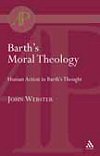
Barth’s Moral Theology: Human Action in Barth’s Thought
- Author: John Webster
- Publisher: T&T Clark
- Publication Date: 2004
- Pages: 240
John Webster shows how Barth’s work as a whole should be regarded as a moral theology. He opens with a study of Barth’s ethical thinking in key writings from the period of his break with theological liberalism, and then highlights the moral anthropology set out in his lectures on ethics from the end of the 1920s. He studies the themes of original sin, hope and freedom in Barth’s Church Dogmatics, illustrating Barth’s concern to prove that divine grace shapes and restores human agency. He explores the theme of the missionary activity of the church in relation to Barth’s remarkable treatment of the prophetic office of Christ. He also draws a contrast between the moral anthropology of Barth and Luther.
. . . a well-researched and closely-rounded study of Barth’s theology of human action. The author concludes the book with two outstanding chapters: first, a profound comparison of Luther and Barth on human agency, and second, the influence of Barth and Luther on one of today’s leading theologians, Eberhard Jungel. To be commended without hesitation.
—John D. Godsey, Wesley Theological Seminary
John Webster was Lady Margaret Professor of Divinity, University of Oxford, and is now Professor of Systematic Theology, University of Aberdeen, Scotland.
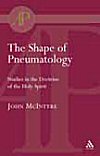
The Shape of Pneumatology: Studies in the Doctrine of the Holy Spirit
- Author: John McIntyre
- Publisher: T&T Clark
- Publication Date: 2004
- Pages: 304
MacIntyre’s work addresses addresses one of the most difficult aspects of the doctrine—the heterogeneity of the biblical and traditional material from which it is derived—and points to the areas where the church must act to recover the sense of the immediacy of the Holy Spirit.
The book explores the nature, origins and development of the doctrine of the Holy Spirit, finding its many recurring expressions deriving on the one hand from Scripture, and on the other from tradition in the form of the doctrine of the Trinity. The biblical models are particularly apparent in the vigorous modern Pentecostalist and charismatic churches while the Greek and Latin Fathers provided a dominant series of Trinitarian models which recur in varying forms across the history of the doctrine of the Spirit, notably in Calvin and Barth.
John McIntyre considers whether the modern church has “betrayed” the insights, vision and experience of the New Testament church. He concludes by pointing to the areas in which the church must act if it is to recover the sense of the immediacy of the Spirit both in its corporate life and in the lives of individuals.
John McIntyre is Emeritus Professor of Divinity, University of Edinburgh.
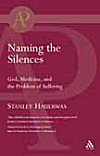
Naming the Silences: God, Medicine, and the Problem of Suffering
- Author: Stanley Hauerwas
- Publisher: T&T Clark
- Publication Date: 2004
- Pages: 168
Why does a good and all-powerful God allow us to experience such pain and suffering? This question, so often asked, has been approached in a variety of ways. In this illuminating and powerful book, Hauerwas explores why we seek explanations for suffering and evil so desperately in today’s world. He draws on true cases of ill and dying children to illustrate and clarify his discussion of the theological issues. Modern medicine, he claims, has too often become a noisy way to hide the gaping silences created by the experiences of childhood illness and death. He discovers for us a God who “can give a voice to that pain in a manner that at least gives us a way to go on.”
Offering no easy answers or false comforts, Naming the Silences is a provocative and sensitive exploration of pressing issues that concern us all.
This valuable book deserves to be widely read and appreciated.
—James F. Childress, University of Virginia
Stanley Hauerwas is Gilbert T. Rowe Professor of Theological Ethics, Duke University.
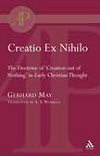
Creatio Ex Nihilo: The Doctrine of ‘Creation out of Nothing’ in Early Christian Thought
- Author: Gerhard May
- Publisher: T&T Clark
- Publication Date: 2004
- Pages: 216
Do we have to understand Genesis Chapter 1 as depicting “creation out of nothing”? The fact is that it has not always been interpreted in this way. Justin Martyr, for example, thought that the “chaos” over which the Spirit hovered was indeterminate matter on which God imposed form and order. Some medieval Jewish texts retain views of creation which do not imply that the universe came into being “out of nothing,” and so do some Islamic traditions.
This important work challenges the generally unquestioned assumption that the doctrine of “creation out of nothing” was inherited by Christianity along with the Jewish scriptures which the Church adopted.
The thesis is advanced that the doctrine arose in the second century CE, and that the Gnostic Basilides was the first to advance the idea as a theory. In the Christian mainstream a shift took place between Justin Martyr, who accepted the notion of pre-existent matter, and Theophilus of Antioch. It was the impact of fresh philosophy which stimulated this specific theoretical response to the question of how and whence things came into being, as distinct from the scriptural affirmation that things which did not exist before had been fashioned or formed by almighty God, the King of the Universe.
There is no other study which concentrates on tracing this particular piece of intellectual history—a development which had crucial repercussions for subsequent Christological debates.
Gerhard May is Professor of Theology at the Johannes Gutenberg University, Mainz.
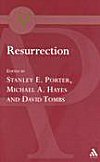
Resurrection
- Editors: Stanley E. Porter, Michael A. Hayes, and David Tombs
- Publisher: T&T Clark
- Publication Date: 1999
- Pages: 376
The theme of Resurrection has continued to prove fascinating for a variety of writers and thinkers, finding expression not only in sacred texts but in other works of literature and the arts. This volume contains the papers from one of the Roehampton Institute London Conferences. In this volume, scholars from a variety of places and varying academic disciplines have addressed the concept of resurrection from a number of critical perspectives. As one might expect, these include analyses of how the resurrection is understood in the biblical and other religious traditions. Also included in this volume are sustained treatments of the concept of resurrection as it appears in various literary texts and other artistic forms of expression.
Stanley E. Porter received his BA at Point Loma College, an MA from Claremont Graduate School, another MA from Trinity Evangelical Divinity School, and a PhD from the University of Sheffield. He has taught for post-secondary institutions in Canada, the USA, and the UK.
David Tombs is Senior Lecturer in Theology at the University of Surrey Roehampton, London.
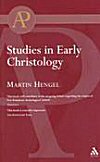
Studies in Early Christology
- Author: Martin Hengel
- Publisher: T&T Clark
- Publication Date: 2004
- Pages: 424
Christology, the doctrine concerning the revelation of God in Christ and the salvation of humanity through Christ, is at the heart of Christian theology and at the heart of the church’s proclamation.
These studies, including hitherto unpublished work, explore the origins of Christology. They explore, for example, the earliest Christological thinking, the messianic claim of Jesus, the reasons for the condemnation of Jesus, the exaltation of Christ, the development of hymn singing, the development of Christological titles, and neglected features of Johannine Christology. In these mysterious beginnings, Martin Hengel discovers a coherent and unique process.
In a substantial foreword, Professor Hengel describes the context of his work in modern scholarship and develops his current thinking.
. . . a book of immense value.
—Epworth Review
Martin Hengel is Emeritus Professor of New Testament and Ancient Judaism, University of Tübingen, Germany.
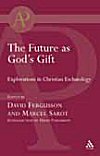
The Future as God’s Gift: Explorations in Christian Eschatology
- Editors: David Fergusson and Michael Sarot
- Publisher: T&T Clark
- Publication Date: 2005
- Pages: 264
International theologians consider the importance of Christian eschatology—both to the life, authority and hope of the church in the world, and to contemporary life and thought generally. Issues addressed include the understanding of time, the nature of eschatological imagery, the status of apocalyptic and millenarian language, and the political and ecological context of modern eschatology.
David Fergusson is at the University of Aberdeen.
Dr. Michael Sarot is Lecturer in Philosophy of Religion at the University of Utrecht.
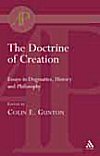
The Doctrine of Creation: Essays in Dogmatics, History and Philosophy
- Editor: Colin E. Gunton
- Publisher: T&T Clark
- Publication Date: 1997
- Pages: 224
This study, by leading scholars from around the world, engages with central hermeneutical, philosophical and theological dimensions of the doctrine of creation. Particular prominence is given to discussion of creation “out of nothing,” the relation of eternal creator to temporal creation, the Trinitarian construction of the doctrine and its ethical implications. Opens up new dimensions to an important topic.
Colin E. Gunton was Professor of Christian Doctrine, King’s College, London, UK, and a Minister of the United Reformed Church.
Reviews
1 rating